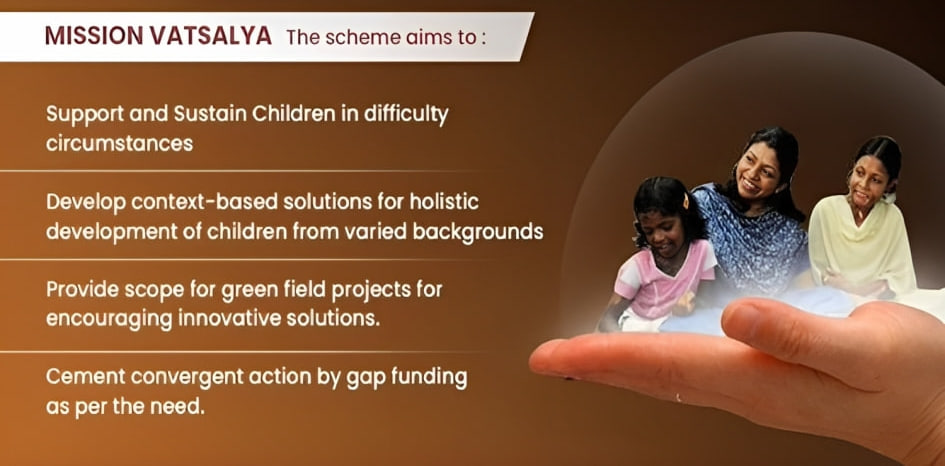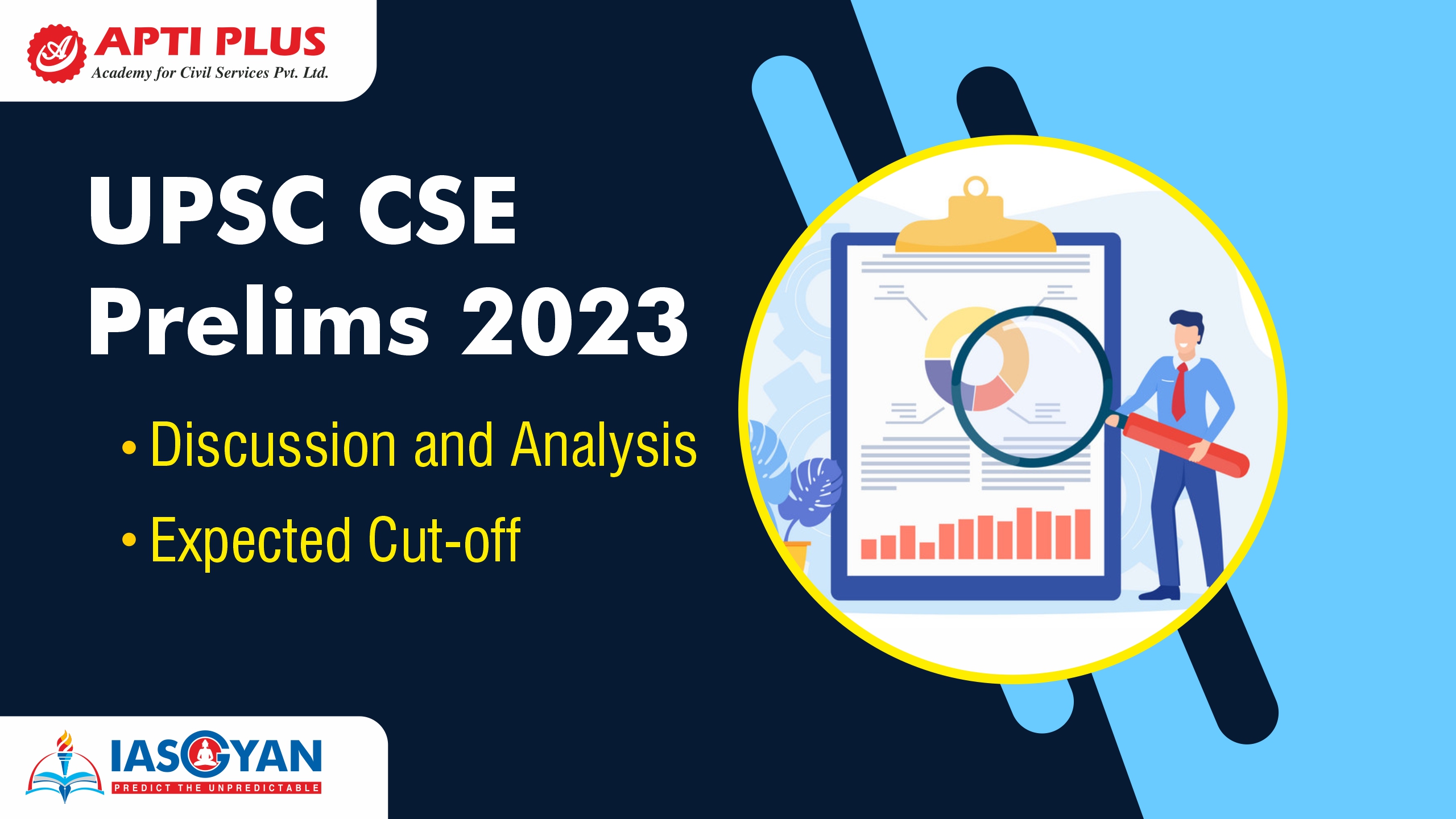Description

Copyright infringement not intended
Context: The National Institute of Public Cooperation and Child Development (NIPCCD) conducted a three-day Refresher Training Programme on Mission Vatsalya, a flagship initiative of the Ministry of Women and Child Development, at its Regional Centre in Mohali from 29th to 31st May 2023.
Details
- The objective of the programme was to enhance the knowledge and skills of the functionaries involved in the implementation of Mission Vatsalya, which aims to provide care and protection to children in need. The programme was attended by 33 participants from various states and union territories.
- The programme also included interactive sessions, group work, case studies, field visits and feedback from the participants.
- They also suggested some areas for improvement such as more time for field visits, more practical exercises and more exposure to innovative models of child care and protection.
The programme covered various topics related to the mission, such as:
- The roles and responsibilities of statutory bodies such as Child Welfare Committees, Juvenile Justice Boards, Special Juvenile Police Units, etc.
- The quality standards and guidelines for service delivery services such as Child Care Institutions, Adoption Agencies, Foster Care, Sponsorship, etc.
- The strategies and best practices for upscaling institutional care and services for children who cannot be placed in family-based care.
- The challenges and opportunities for encouraging non-institutional community-based care such as family preservation, reunification, kinship care, etc.
- The training and capacity building needs and methods of duty holders such as social workers, counsellors, caregivers, etc.

Mission Vatsalya
About
- Mission Vatsalya is a centrally sponsored scheme that aims to achieve the objectives of child protection and development under the Sustainable Development Goals (SDGs).
- It was launched by the Ministry of Women and Child Development in 2021-22 as a revamped version of the Integrated Child Protection Scheme (ICPS), which was started in 2010.
- The mission covers all children in need of care and protection, such as orphans, street children, abandoned children, children in conflict with the law, children affected by natural disasters, children with disabilities, children with HIV/AIDS, etc.
- The mission also focuses on child rights, advocacy and awareness, along with strengthening the juvenile justice system.
The main objectives of Mission Vatsalya are:
- To secure a healthy and happy childhood for every child in the country.
- To ensure opportunities to enable them to discover their full potential and assist them in flourishing in all respects, in a sustained manner.
- To foster a sensitive, supportive and synchronized ecosystem for the development of children.
- To assist States and UTs in delivering the mandate of the Juvenile Justice Act, 2015 and achieve the Sustainable Development Goals (SDGs).
Mission Vatsalya Components:
Improve the functioning of statutory bodies
- This component aims to ensure the effective functioning of various bodies established under the Juvenile Justice (Care and Protection of Children) Act, 2015, such as Child Welfare Committees (CWCs), Juvenile Justice Boards (JJBs), District Child Protection Units (DCPUs), State Child Protection Societies (SCPSs), etc.
- It also supports the establishment and functioning of Special Juvenile Police Units (SJPUs) and Childline Services.
Strengthen service delivery structures
- This component aims to provide quality services to children in need of care and protection through various institutions and organizations.
- It supports the establishment and maintenance of childcare institutions (CCIs), such as observation homes, special homes, children's homes, shelter homes, open shelters, etc.
- It also supports the provision of alternative care options, such as foster care, adoption, sponsorship, etc.
Upscale institutional care and services
- This component aims to improve the standards of care and protection in CCIs by ensuring compliance with the Model Rules under the JJ Act, 2015.
- It also supports the provision of various services to children in CCIs, such as education, health, nutrition, recreation, counselling, vocational training, etc.
Encourage non-institutional community-based care
- This component aims to promote family-based non-institutional care of children in difficult circumstances based on the principle of institutionalization of children as a measure of last resort.
- It supports the identification and rehabilitation of children living on the streets or in other vulnerable situations. It also supports the prevention of child trafficking, child labour, child marriage, etc.
Emergency outreach services
- This component aims to provide immediate assistance and protection to children in distress or crises.
- It supports the establishment and functioning of emergency response units (ERUs), which are mobile teams that can reach out to children in need within 24 hours.
- It also supports the provision of emergency medical care, legal aid, psycho-social support, etc.
Training and capacity building
- This component aims to enhance the knowledge and skills of various stakeholders involved in child protection and development.
- It supports the provision of training and orientation programmes for functionaries of statutory bodies, CCIs, Childline Services, etc.
- It also supports the development of training modules, manuals, guidelines, etc.
How is Mission Vatsalya funded?
- Mission Vatsalya is funded by both the central and state governments in a ratio of 60:40 for states with legislatures and 90:10 for northeastern states and Himalayan states. Union territories without legislatures, it is fully funded by the central government.
- The funds are released according to the requirements and demands made by the states/UTs.
Significance
- It addresses the multiple vulnerabilities and deprivations faced by millions of children in India, especially those who are orphaned, abandoned, trafficked, exploited, abused, or living in difficult circumstances.
- According to the 2011 census, there were 20.1 million orphaned children in India, of which 4.1 million were living in institutional care. Moreover, there are an estimated 10 million street children, 4.5 million child labourers, and 1.2 million child victims of commercial sexual exploitation in the country.
The mission faces several challenges in achieving its objectives, such as:
- Lack of coordination and convergence among various stakeholders, such as central and state governments, civil society organizations, the corporate sector, media, and academia.
- Inadequate infrastructure and human resources for providing quality care and protection services to children in need.
- Low awareness and sensitivity among the public and duty bearers about the rights and needs of children in need.
- Gaps in data collection, monitoring, evaluation, and reporting on the status and progress of children in need.
- Socio-cultural barriers and stigma associated with children in need, especially those belonging to marginalized groups such as Dalits, Adivasis, Muslims, and LGBTQIA+.
To overcome these challenges and ensure the effective implementation of Mission Vatsalya, the following steps are suggested:
- Strengthening the policy and legal framework for child protection by harmonizing existing laws and schemes with the United Nations Convention on the Rights of the Child (UNCRC) and other international standards.
- Enhancing the capacity and accountability of child protection functionaries at all levels by providing regular training, supervision, mentoring, and performance appraisal.
- Developing a robust information management system for collecting, analyzing, and disseminating data on children in need and their services.
- Promoting community participation and ownership by involving local self-governments, community-based organizations, faith-based groups, youth clubs, and children themselves in planning, implementing, monitoring, and evaluating child protection interventions.
- Creating a positive social environment for children in need by raising awareness and sensitization among the public and duty bearers about their rights and needs, and challenging negative stereotypes and discrimination against them.

Conclusion
- Mission Vatsalya is a visionary and ambitious endeavour that has the potential to transform the lives of millions of children in need in India. Addressing their vulnerabilities and deprivations holistically can enable them to realize their full potential and contribute to the nation's development. However, to achieve this vision, it requires concerted efforts from all stakeholders across sectors and levels. Only then can we ensure that every child has a happy childhood and a bright future.
Must Read Articles:
Mission Vatsalya: https://iasgyan.in/daily-current-affairs/mission-vatsalya-scheme
|
PRACTICE QUESTION
Q. Mission Vatsalya is a flagship initiative of the Government of India to provide comprehensive care and protection to children in need. It aims to prevent child abuse and exploitation, ensure quality alternative care, and facilitate rehabilitation and social reintegration of children. What are the major challenges and gaps in its implementation? How can the government and civil society work together to overcome these challenges and ensure the success of Mission Vatsalya?
|
https://pib.gov.in/PressReleasePage.aspx?PRID=1929100















